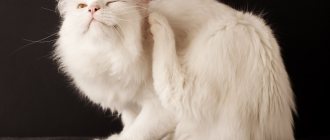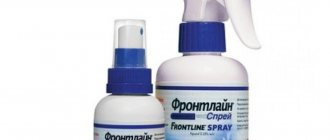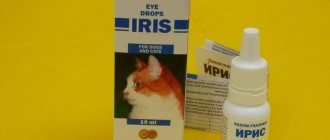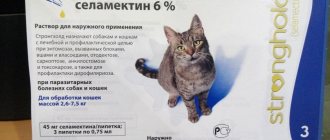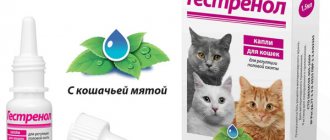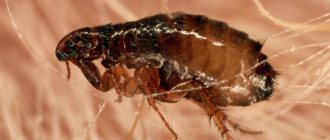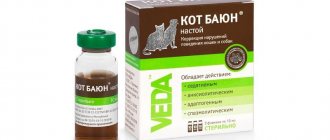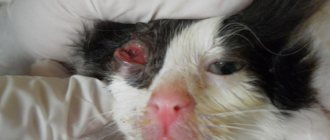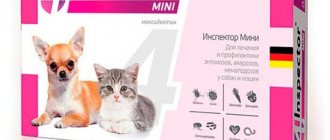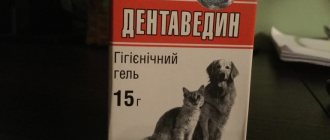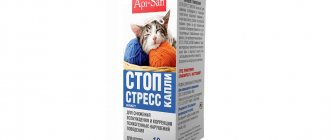Anandin
One of the most common drugs for the treatment of rhinitis. In addition, the medicine can be used in the treatment of diseases of the eyes and ears.
The composition includes glucaminopropylcarbacridone, which has a pronounced anti-inflammatory effect. In addition, the active substance enhances the local and general immune status of the body. The following indications for use are distinguished:
- Rhinitis of bacterial and viral origin.
- The product can be used as an auxiliary medicine in the treatment of fungal inflammation of the nasal cavity (Anandin alone cannot cope with fungi).
- In addition, the medicine helps to cope with rhinitis of allergic etiology.
There are usually no difficulties when using the drug:
- For mild rhinitis, drop two drops into each nostril twice a day. The period of use is approximately a week.
- In the case of rhinitis with moderate and severe intensity of the inflammatory process, the dose can be increased to three or four drops in each nostril, the frequency of use can be increased to three times a day. The duration of use in this case should not exceed two weeks.
Fosprenil
This remedy is considered one of the most effective antiviral drugs of natural origin. It is produced on the basis of an extract from pine needles, due to which it is completely safe for the health of the animal. The following indications for its use are distinguished:
- Rhinitis of viral and bacterial origin.
- Ulcerative and erosive lesions of the nasal mucosa of any etiology.
But! As a rule, Fosprenil is used as part of combination therapy in the treatment of many infectious diseases , such as “distemper”, infectious peritonitis, canine distemper and calcivirosis. The fact is that the pine needle extract contained in the medicine enhances nonspecific resistance and helps the cat’s body cope with the viral infection.
As a rule, this medicine is prescribed in oral form, but for severe rhinitis (which almost always accompanies viral diseases), it is instilled into each nostril up to four times a day. It is recommended to use the drug for a maximum of two weeks. If you continue to drip it after this period, the risk of developing allergic reactions increases.
Maxidin
Another drug that can also be instilled into a cat's nose, and which is a good immunomodulatory agent. The main active ingredient is germanium pyridine-2,6-dicarboxylate. A substance with such a difficult name has a very good effect on the animal’s body:
- It increases nonspecific resistance.
- Accelerates regeneration processes, allowing damaged mucous membranes to heal faster.
It can be used in the following cases:
- Infectious rhinotracheitis.
- Calcivirosis.
- For rhinitis due to severe hypothermia, etc.
The method of application is extremely simple: three to five drops of the drug are instilled into each nostril. Frequency of use – up to five times a day. In addition to treating the nasal cavity, it is recommended to irrigate the pet’s mouth at the same time (dose - up to 0.5 ml at a time). This will speed up the healing process. The duration of treatment is up to two weeks in a row.
When drops are not necessary
Just like people, cats get colds. Symptoms:
- Sneezing.
- Light nasal discharge.
- Decreased appetite, but not refusal to feed.
- Decreased activity.
- Slight increase in temperature.
If the cat continues to eat, willingly communicates with the owner and does not experience additional symptoms, treatment is not required. A cold will go away on its own within 4–7 days. If therapy is carried out, recovery occurs within 3–4 days.
Treatment is usually not carried out, since the risks associated with side effects of drugs are much higher. However, the recovery process can be accelerated by following these rules:
- Massage the nose and remove mucus using a baby syringe.
- Keeping your nose clean.
- Liquid and exclusively warm food.
- Comfort and peace.
- Indoor air humidification.
Thymogen
In fact, this medicine can be considered an analogue of Maxidin: the drug also has a pronounced immunomodulatory effect and has a beneficial effect on the pet’s immunity. The main active ingredient is alpha-glutamyl tryptophan. The product is gentle and very effective:
- It increases the speed of regeneration processes so much that it is recommended for use for ulcerative rhinitis.
- Significantly increases nonspecific resistance, which is why it is very effective in the treatment of pathologies of viral origin.
Two drops of the drug are instilled into each nostril. Frequency of use – once a day. The duration of treatment is up to five days in a row, but if necessary, this period can be significantly extended.
“Human” drugs for the common cold
Now let’s consider a situation that is probably familiar to many experienced breeders: the cat’s nose is “running”, but the above-described drugs are not at hand (or a drug with a vasoconstrictor effect is needed). There is a considerable temptation to help your pet by using some drops from your home medicine cabinet. Is it possible to do this?
In most cases you shouldn't do this. The reason is simple - such drugs have not been certified for use in veterinary medicine; how the animal’s body will react to their use is a very big question. But still, in situations where there is no other alternative, it is allowed to use some drugs.
How often do ears need cleaning?
You might be surprised, but never. Our ears are a very sophisticated system that cleans itself:
- Earwax serves as a natural barrier that prevents bacteria, germs, fungi, dirt, dust, and hairs from entering the ear canal. And this barrier is located in a certain place - at the end of its first third from the entrance to the ear.
- The skin in the ears is renewed towards the exit of the ear canal and along the way it “takes” excess wax with it. Therefore, normally there is no more of it than is needed to maintain internal cleanliness.
By the way, yawning and chewing also contribute to the natural removal of sulfur. Then the question reasonably arises:
List of medications for the common cold suitable for cats
- Naphthyzin. The medicine is extremely controversial, but its vasoconstrictor effect is excellent. It is recommended to mix it with water and dexamethasone in a 1:1:1 ratio. In this case, the drops will help the cat breathe, and the inflammatory process will be relieved. Attention! When using Naphthyzin, the risk of developing allergic reactions is quite high, and therefore antihistamines should always be on hand! Drip no more than one drop into each nostril, no more than twice a day, and no longer than three days in a row.
- Derinat. It is quite an effective remedy, and due to its “softness” the medicine is often used in pediatrics. You can drop two drops into each nostril, up to three times a day, for three days in a row (after consultation with a veterinarian, it can be longer).
- Pinosol. It is not suitable for all animals (and not all people), but it is a natural and quite effective drug. You can drip two or three drops into each nostril, up to three times a day, the duration of treatment is up to a week. But! The risk of allergies is high, so you need to keep antihistamines in stock.
- Protargol. Well suited for the treatment of purulent rhinitis. Two drops in each nostril three times a day, for up to four days in a row.
- Vibrocil. It is also a fairly safe medicine, often used in pediatrics. You can instill one drop into each nostril, up to two times a day. Duration of treatment is up to five days (in some cases it is allowed to use the drug for a whole week).
Important! Let us repeat once again that all these drugs, despite all their effectiveness, are not initially intended for use in veterinary medicine. Their use is potentially dangerous, and therefore the owner can use such drops solely at his own peril and risk! We advise you to consult your veterinarian.
Instructions and methods for using nasal drops for cats at home
Choosing drops is the simplest task; difficulties become obvious when the medicine needs to be put into use. Keeping a cat that is resisting, not injuring the nose and sending the drops to their destination is an almost impossible task if your pet is not completely phlegmatic.
Instructions:
- Place the cat in a sitting position.
- Open the tube with drops and place it at an accessible distance.
- Raise your pet's head so that his nose is “looking” at the ceiling.
- If you are right-handed, use your left hand - place your thumb and index finger in a "C" shape. Place your thumb under your cat's jaw and your index finger on his forehead, so you can hold your cat's head with one hand.
- Take the tube of drops in your free hand.
- Turn the bottle over so that the dropper is facing the floor. Squeeze the bottle or dropper lightly until a drop appears at the end of the “nozzle.”
- Maintain this pressure and bring the tip of the pipette as close to the cat's nostril as possible.
- Applying additional pressure to the bottle with drops, inject the required amount of the drug into the nostril.
Important! The closer you hold the dropper, the greater the chance of injury if the cat begins to resist.
The above scenario is unlikely, since the cat will begin to resist once the liquid enters the nose. Below are methods to safely restrain your pet during the procedure.
Let's start with preparation:
- Cover the table with a thick, non-slip cloth.
- Provide good lighting.
- Open the drops and heat them in your palm to a comfortable temperature.
4-hand operation
If you have someone to ask for help, great! An assistant can restrain your cat while you administer the medication. Follow this procedure as you will be more likely to be trusted with your pet. The main task of the assistant is to keep the cat from making sudden movements towards the pipette.
Understand that this method of restraint requires two people. You will need a helper to hold the cat while you manage the drops. This method is generally a little less stressful for your cat and allows you to free both hands to administer the drops effectively. This is generally the preferred method of treating an aggressive cat.
Helper Tips:
- It is more convenient to hold the cat standing from behind.
- Cats are calmed by moderate pressure. If the pet is very nervous, it is better to gently press it to the table.
- The cat's most dangerous weapon during the procedure is the claws on its front paws. To prevent the patient from using her claws, you need to gently press her forearms inward.
- If your cat tries to jump up, the easiest way is to press his chest against the table.
Towel
This method involves wrapping the cat in a towel so that only the head remains “on the surface”. Instructions:
- Spread a towel on the table or sofa.
- Calm your cat and hold him in one hand.
- With the other hand we take the cat by the withers.
- Place the cat on a towel at a distance of 20–25 cm from the edge and make the first fold. The first fold should be the tightest, the towel should be enough to make a full turn around the cat's body.
- Next, wrap the cat like a spring roll without applying much pressure.
- The pet's head should be visible from the resulting “roll”.
- Holding the cat with its back to you, head up, carefully introduce the drops.
Be careful! If your cat chokes while she is wrapped in a towel, she will need to be quickly turned around.
